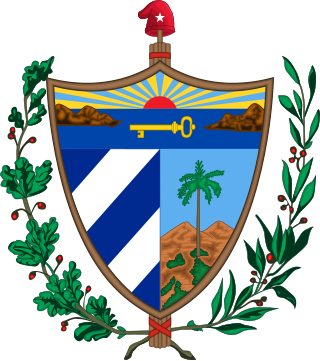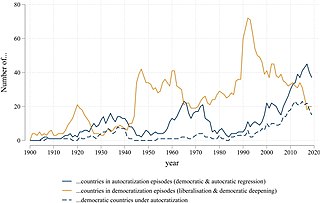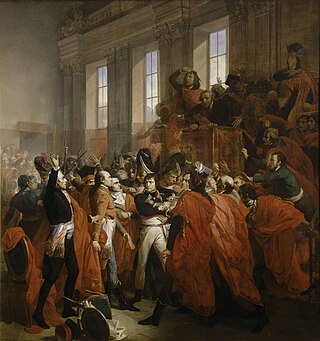Autocracy is a system of government in which absolute power is held by the ruler, known as an autocrat. It includes most forms of monarchy and dictatorship, while it is contrasted with democracy and feudalism. Various definitions of autocracy exist. They may restrict autocracy to cases where power is held by a single individual, or they may define autocracy in a way that includes a group of rulers who wield absolute power. The autocrat has total control over the exercise of civil liberties within the autocracy, choosing under what circumstances they may be exercised, if at all. Governments may also blend elements of autocracy and democracy, forming an anocracy. The concept of autocracy has been recognized in political philosophy since ancient times.

Cuba has had a socialist political system since 1961 based on the "one state – one party" principle. Cuba is constitutionally defined as a single party Marxist–Leninist socialist republic with semi-presidential powers. The present Constitution of Cuba, which was passed in a 2019 referendum, also describes the role of the Communist Party of Cuba to be the "leading force of society and of the state" and as having the capability of setting national policy, and First Secretary of the Communist Party is the most powerful position in Cuba. The 2019 Constitution of Cuba identifies the ideals represented by Cuban independence hero José Martí and revolutionary leader Fidel Castro as the primary foundation of Cuba's political system, while also stressing the importance of the influence of the ideas of Marx, Engels, and Lenin.
In politics, a regime is the form of government or the set of rules, cultural or social norms, etc., that regulate the operation of a government or institution and its interactions with society. The two broad categories of regimes that appear in most literature are democratic and autocratic. However, autocratic regimes can be broken down into a subset of many different types. The key similarity between all regimes are the presence of rulers, and either formal or informal institutions.
In political science, a political system means the type of political organization that can be recognized, observed or otherwise declared by a state.

Democratization, or democratisation, is the structural government transition from an authoritarian government to a more democratic political regime, including substantive political changes moving in a democratic direction.
The term "illiberal democracy" describes a governing system that hides its "nondemocratic practices behind formally democratic institutions and procedures". There is a lack of consensus among experts about the exact definition of illiberal democracy or whether it even exists.
Guided democracy, also called managed democracy, is a formally democratic government that functions as a de facto authoritarian government or, in some cases, as an autocratic government. Such hybrid regimes are legitimized by elections, but do not change the state's policies, motives, and goals. The concept is also related to semi-democracy, also known as anocracy.

A democratic transition describes a phase in a countries political system as a result of an ongoing change from an authoritarian regime to a democratic one. The process is known as democratisation, political changes moving in a democratic direction. Democratization waves have been linked to sudden shifts in the distribution of power among the great powers, which created openings and incentives to introduce sweeping domestic reforms. Although transitional regimes experience more civil unrest, they may be considered stable in a transitional phase for decades at a time. Since the end of the Cold War transitional regimes have become the most common form of government. Scholarly analysis of the decorative nature of democratic institutions concludes that the opposite democratic backsliding (autocratization), a transition to authoritarianism is the most prevalent basis of modern hybrid regimes.
Defective democracy is a concept that was proposed by the political scientists Wolfgang Merkel, Hans-Jürgen Puhle and Aurel S. Croissant at the beginning of the 21st century to subtilize the distinctions between totalitarian, authoritarian, and democratic political systems. It is based on the concept of embedded democracy. While there are four forms of defective democracy, how each nation reaches the point of defectiveness varies. One recurring theme is the geographical location of the nation, which includes the effects of the influence of surrounding nations in the region. Other causes for defective democracies include their path of modernization, level of modernization, economic trends, social capital, civil society, political institutions, and education.
Authoritarianism is a political system characterized by the rejection of democracy and political plurality. It involves the use of strong central power to preserve the political status quo, and reductions in the rule of law, separation of powers, and democratic voting. Political scientists have created many typologies describing variations of authoritarian forms of government. Authoritarian regimes may be either autocratic or oligarchic and may be based upon the rule of a party or the military. States that have a blurred boundary between democracy and authoritarianism have some times been characterized as "hybrid democracies", "hybrid regimes" or "competitive authoritarian" states.

A coup d'état, or simply a coup, is typically an illegal and overt attempt by a military organization or other government elites to unseat an incumbent leadership. A self-coup is when a leader, having come to power through legal means, tries to stay in power through illegal means.
Anocracy, or semi-democracy, is a form of government that is loosely defined as part democracy and part dictatorship, or as a "regime that mixes democratic with autocratic features". Another definition classifies anocracy as "a regime that permits some means of participation through opposition group behavior but that has incomplete development of mechanisms to redress grievances." The term "semi-democratic" is reserved for stable regimes that combine democratic and authoritarian elements. Scholars distinguish anocracies from autocracies and democracies in their capability to maintain authority, political dynamics, and policy agendas. Similarly, the regimes have democratic institutions that allow for nominal amounts of competition. Such regimes are particularly susceptible to outbreaks of armed conflict and unexpected or adverse changes in leadership.

Embedded democracy is a form of government in which democratic governance is secured by democratic partial regimes. The term "embedded democracy" was coined by political scientists Wolfgang Merkel, Hans-Jürgen Puhle, and Aurel Croissant, who identified "five interdependent partial regimes" necessary for an embedded democracy: electoral regime, political participation, civil rights, horizontal accountability, and the power of the elected representatives to govern. The five internal regimes work together to check the power of the government, while external regimes also help to secure and stabilize embedded democracies. Together, all the regimes ensure that an embedded democracy is guided by the three fundamental principles of freedom, equality, and control.

Democratic backsliding is a process of regime change towards autocracy that makes the exercise of political power by the public more arbitrary and repressive. This process typically restricts the space for public contestation and political participation in the process of government selection. Democratic decline involves the weakening of democratic institutions, such as the peaceful transition of power or free and fair elections, or the violation of individual rights that underpin democracies, especially freedom of expression. Democratic backsliding is the opposite of democratization.
Stunning elections are a process of democratization in authoritarian or hybrid regimes through partially free elections in which the opposition either wins, or forms a majority in parliament and begins to significantly influence the decision-making process.

Democratic backsliding, also known as autocratization, is the decline in democratic qualities of a political regime, the opposite of democratization.

Democratic backsliding in the United States has been identified as a trend at the state and national levels in various indices and analyses. Democratic backsliding is "a process of regime change towards autocracy that makes the exercise of political power more arbitrary and repressive and that restricts the space for public contestation and political participation in the process of government selection".
Electoral autocracy is a hybrid regime, in which democratic institutions are imitative and adhere to authoritarian methods. In these regimes, regular elections are held, but they are accused of failing to reach democratic standards of freedom and fairness.
Democracy indices are quantitative and comparative assessments of the state of democracy for different countries according to various definitions of democracy.













